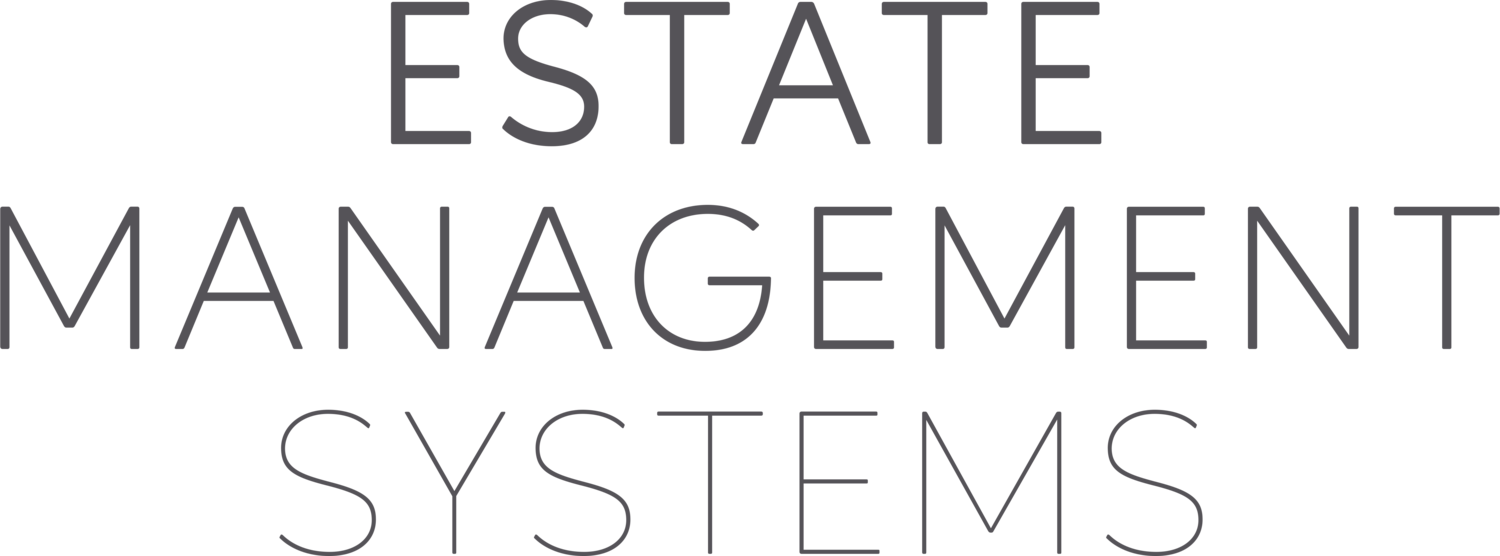Three Steps to Equip Yourself to Manage Multiple Properties
Co-authored by Mark Harbeke
Are you yearning to scale your value — and your salary — by successfully managing multiple properties for your UHNW principal?
Well, I’ve got good news for you. You can achieve your goal by following my three steps below.
This video is from our YouTube channel. I invite you to subscribe, and give us a 👍 if you like the content.
Three steps to managing more…
Step 1: Define, prioritize and minimize YOUR risks at the main residence
Since your most important role is to minimize your principal’s risk, start by minimizing yours to achieve this goal.
Here are four types of risks we deal with daily and what you can do to minimize them:
Staff
QUALIFY:
- Define their role
- Give them task lists
- Hold them accountable
DOCUMENT:
- Execute a NDA
- Fortify HR documents with driving-, cell phone- and credit card-usage policy agreements
- Develop an Employee’s Memorandum of Understanding
SUPERVISE:
- Check in with them every morning
- Require their completed punch lists by the end of the day or week
- Cross train staff with a focus on providing support and teamwork
- Inspect their work
- Provide feedbackContractors
QUALIFY — ensure they’re:
- Licensed
- Bonded
- Insured
DOCUMENT:
- Require NDAs
- Invoke a Contractor’s Memorandum of Understanding
SUPERVISE:
- Meet to start work each day
- Check on them often
- Inspect work at the end of the day
- Require a daily work reportMechanical
DOCUMENT:
- Compile each appliance’s maintenance history- Track maintenance records
CALENDAR:- Proactive and regular maintenance tasks
- Regular inspections
REPAIR AND REPLACE:
- Keep difficult-to-get spare parts on-hand
- Replace appliances proactively
Emergencies
TRAIN STAFF about:
- Property utility shut-offs
- CPR and medical procedures
- Fire equipment locations
- Regular training sessions
MAINTAIN EQUIPMENT AND SUPPLIES:
- Inspect fire extinguishers
- Charge and regularly test medical life saving devices (AED)
- Test smoke detectors
- Refresh emergency food, water and supplies
The above is a long list. But look at the results you’ll get from putting them in place — propelling you on your path towards scaling your services to additional properties:
Your staff is better trained and qualified to minimize accidents
You’ll have teamwork in place increasing the likelihood that your staff will ask for help from each other and can cover for each other when needed
Your contractor will understand expectations minimizing damage to the property and leaving less of a mess
Your mechanical systems are proactively maintained and replaced and less likely to fail
Your emergency plan and supplies are in place and your staff knows what to do when one happens
Now that your risks are minimized…
Step 2: Systemize EVERYTHING (create templates, processes and procedures)
The work that you did in Step 1 provides the content, specific to your principal’s property, that makes up the following. The goal is to create easily understandable and implementable documents that can be duplicated and used at additional properties.
Here’s what I advise as must-haves for:
Templates
HR policy, job descriptions, recordkeeping
Contractor MOU, NDA, contact info
Emergency procedures and supply lists
Appliance and mechanical maintenance recordkeeping
Scripts and emails for onboarding new staff and vendors
Processes and procedures
Schedule maintenance
Maintenance punch lists (daily, weekly, seasonal, annual)
Assign work and track progress
Schedule and implement training
Expectations and protocol for developing teamwork
Lists to include:
Assets to take in case of emergencies
Prescription medication
Driver’s license, passports
Pet care, food and medications
And don’t forget about emergency contact info:
Staff’s spouse or family
Insurance providers
Doctors, vets
Poison control
Utility companies
Neighbors
Step 3: Communicate and delegate
You’ve put in the time and legwork to compile your documents and you know what needs to get done and when. The final step involves leveraging your “boots on the ground” to manage all of the new properties your principal assigns you — including ones you may never see in person.
Make sure to maintain frequent communication with, and delegate liberally to, your:
House managers,
Housekeepers,
Maintenance technician, and
Handyman
You might also consider hiring a personal assistant, if one is not already on staff, to ensure you can implement all that needs to be done in order to perform your number-one function (which, again, is to minimize your principal’s risk).
Now you’re ready to manage more!
That’s more…
Staff
Properties
Events
And anything else your principal throws your way
If you need to fill in some gaps in your management templates, check out my luxury home and lifestyle templates, here:
AND, if you want to do a deeper dive into this information, I did a 20-minute Coffee With Kelly session where I provided more detailed formation. You can listen here:
Do you have our FREE Cheat Sheets?
Master List of Lists for Managing a Mansion
and
Contractor’s Memorandum of Understanding?
If not, submit your email address here to immediately receive both important documents.
Please invite a friend and share this post on: Facebook | Twitter | LinkedIn
I hope this is helpful information. If there’s a way I can help you improve your performance and service, please reach out. I’d love to hear from you.
You’ve got this!
xo
Kelly

